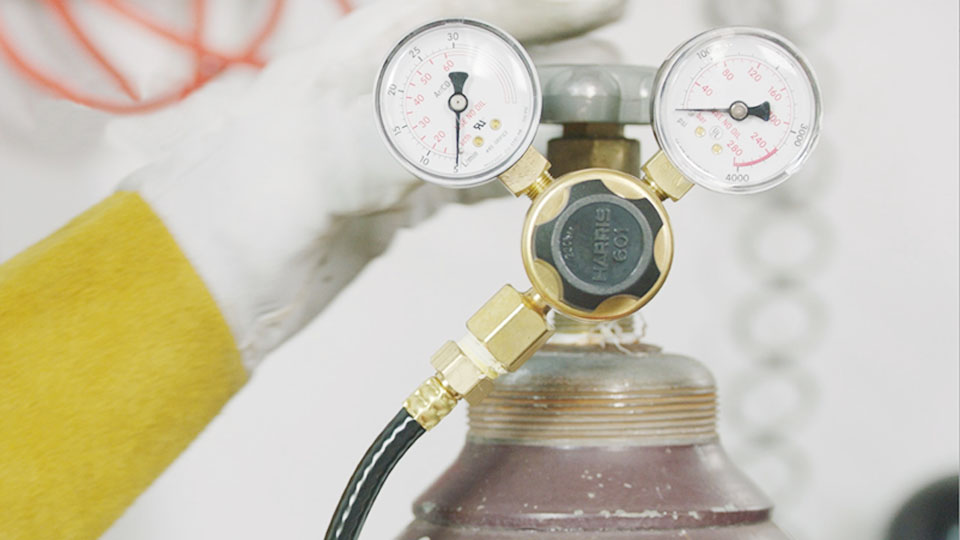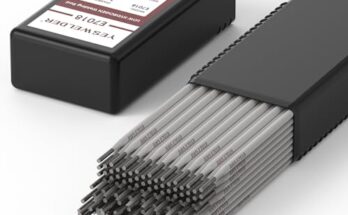Getting the right gas pressure for MIG welding is something I learned the hard way. Too little gas, and you end up with a weld full of porosity.
Too much gas, and you waste money while also creating turbulence that ruins your weld. I figured out the ideal gas pressure settings that work best for different situations.

Image by homedepot
If you’re setting up your MIG welder and wondering how much gas pressure you should use, you’re in the right place.
I’ll walk you through everything you need to know, from choosing the right gas type to setting the correct flow rate for clean, strong welds.
Why Gas Pressure Matters in MIG Welding
In MIG welding, shielding gas protects the molten weld pool from contamination. Without it, oxygen and other airborne particles can mix into the weld, leading to defects like porosity, oxidation, and weak welds.
Gas pressure (measured in PSI) and gas flow rate (measured in CFH – cubic feet per hour) work together to ensure proper shielding. You need just the right amount—not too little and not too much.
Choosing the Right Shielding Gas for MIG Welding
Before setting the gas pressure, it’s important to choose the right shielding gas. The most common gases used in MIG welding include:
| Gas Type | Best for | Advantages |
|---|---|---|
| 100% CO₂ | Carbon steel | Deep penetration, lower cost, but more spatter |
| 75% Argon / 25% CO₂ (C25) | General-purpose steel welding | Balanced penetration, less spatter, smooth arc |
| 100% Argon | Aluminum & non-ferrous metals | Cleaner welds, minimal spatter |
| 90% Argon / 10% CO₂ | Stainless steel | Strong, clean welds with good penetration |
For most mild steel MIG welding, I recommend C25 (75% Argon, 25% CO₂). It provides good weld quality with minimal spatter, making your job easier.
Ideal Gas Pressure and Flow Rate for MIG Welding
Now, let’s talk about the actual settings. While gas pressure is measured in PSI (pounds per square inch), the key setting for MIG welding is gas flow rate, measured in CFH (cubic feet per hour).
Recommended Gas Flow Rate for MIG Welding
| Metal Thickness | Gas Flow Rate (CFH) |
|---|---|
| 18 gauge – 1/8” | 10-20 CFH |
| 1/8” – 1/4” | 20-25 CFH |
| 1/4” and thicker | 25-30 CFH |
For most indoor welding, setting the flow rate between 20-25 CFH works well. If you’re welding outdoors, you may need to increase it to 30-35 CFH to prevent the shielding gas from being blown away.
Gas Pressure Settings for MIG Welding
The gas pressure (PSI) depends on the type of regulator you’re using, but typically:
- Standard gas regulators operate at 25-50 PSI.
- Flowmeter-style regulators work best when set between 3-30 PSI, depending on the CFH needed.
Most MIG welding setups will do fine with 25-30 PSI of gas pressure at the regulator and adjusting CFH based on metal thickness and welding conditions.
How to Set the Correct Gas Pressure for MIG Welding
Setting the right gas pressure is straightforward if you follow these steps:
Check Your Gas Tank and Regulator
- Make sure your gas tank is securely attached and the regulator is in good condition.
- Open the tank valve slowly to avoid damaging the regulator.
Set the Pressure on Your Regulator
- For standard regulators, set the pressure between 25-30 PSI.
- For flowmeter regulators, adjust based on the CFH needed.
Adjust the Flow Rate on Your Welder
- Use the settings chart above as a starting point.
- If you hear a loud hissing sound, you might have too much gas.
Test the Gas Flow
- Trigger the MIG gun without welding to check for proper gas flow.
- You should hear a steady gentle flow of gas, not a strong blast.
Start Welding and Adjust as Needed
- If you see porosity (tiny holes in the weld), increase the gas flow slightly.
- If your weld looks too cloudy or inconsistent, try lowering the flow rate.
What Happens If Gas Pressure is Too High or Too Low?
Setting the wrong gas pressure can cause problems. Here’s what to look out for:
| Gas Flow Issue | What Happens | Solution |
|---|---|---|
| Too Low | Porosity (tiny holes in the weld) | Increase gas flow |
| Too High | Turbulence, wasted gas, weak welds | Reduce gas flow |
| Gas Blowing Away | Outdoor welding issues | Use a windscreen or increase flow slightly |
Common Problems and How to Fix Them
If your welds don’t look right, check your gas settings first. Here are some common issues and how to fix them:
Why is my weld full of tiny holes?
- You probably have too little gas flow or a leak in your gas line.
- Check for leaks and try increasing the CFH slightly.
Why is my gas tank emptying too fast?
- You may be using too much pressure.
- Lower your flow rate to 20-25 CFH unless welding outdoors.
Why does my weld look too cloudy or rough?
- Too much turbulence from excessive gas flow can cause this.
- Reduce your flow rate and check your technique.
Conclusion
Setting the ideal gas pressure for MIG welding isn’t complicated once you know what to look for. The right gas flow rate depends on your metal thickness, environment, and welding conditions.
For most projects, keeping it around 20-25 CFH works great. If you’re welding outdoors, increasing it to 30-35 CFH helps prevent shielding gas from being blown away.
The key takeaway? Too little gas leads to porosity, while too much gas creates turbulence. Finding the sweet spot ensures clean, strong welds every time. So, before striking that arc, take a moment to check your gas settings—it makes all the difference.
FAQs
What is the best gas flow rate for MIG welding?
For most welding, 20-25 CFH is ideal. Increase to 30-35 CFH if welding outdoors.
Why is my MIG weld full of holes?
This usually happens when gas flow is too low or there’s a leak in the gas supply. Try increasing the flow rate slightly.
Can you MIG weld without shielding gas?
Yes, but only if you use flux-core wire, which has a built-in shielding system. Otherwise, gas is required for MIG welding.
Does higher gas flow make a stronger weld?
Not necessarily. Too much gas can cause turbulence and weaken the weld. Stick to recommended CFH settings.





